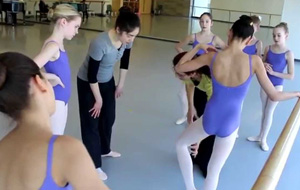 A recent study in dance injury has suggested that ‘bio-banding’ could reduce the risk of injury for ballet dancers. Bio-banding refers to grouping dancers by physical maturity – rather than age – in classes. This could better suit late-maturing girls in coping with intense training, rather than apply a blanket-style, objective teaching to all students without considering their individual development.
A recent study in dance injury has suggested that ‘bio-banding’ could reduce the risk of injury for ballet dancers. Bio-banding refers to grouping dancers by physical maturity – rather than age – in classes. This could better suit late-maturing girls in coping with intense training, rather than apply a blanket-style, objective teaching to all students without considering their individual development.
The study, published in the Journal of Adolescence, highlighted how time differences in maturing have important implications for talent identification and development, as well as personal self-esteem. This has specific implications for ballet and dance training, where these issues can be more apparent. It could be more beneficial, therefore, to group young dancers by their developmental rather than chronological age in order to lower their risk of injury, and provide a more sensitive and specific training method for them.
Bio-banding is growing in prominence for other sports, and the research done by the UK’s Bath and Bristol universities indicates that the current practices for grouping and evaluating young dancers could be counterproductive. The study has so far focused purely on girls, essentially because girls of the same chronological age can vary greatly biologically, with some maturing in advance or delay of others. Those maturing later are potentially placed at a disadvantage in class, during important phases of their development. A dance teacher’s general role can be paramount for a young dancer, so their ability to manage maturation in dancers could then positively affect the girls’ self-esteem and confidence.
Applying bio-banding elements to dance could improve the experiences of dancers, reduce injury risks and also ensure talent is not wasted by promoting a positive learning environment. Currently dancers in vocational training are grouped by age and can begin full-time training for up to six days a week from as young as 11 years old. Here they would be provided with the most developmentally appropriate learning contexts, and would not be put under undue stress at the wrong points in their development.
